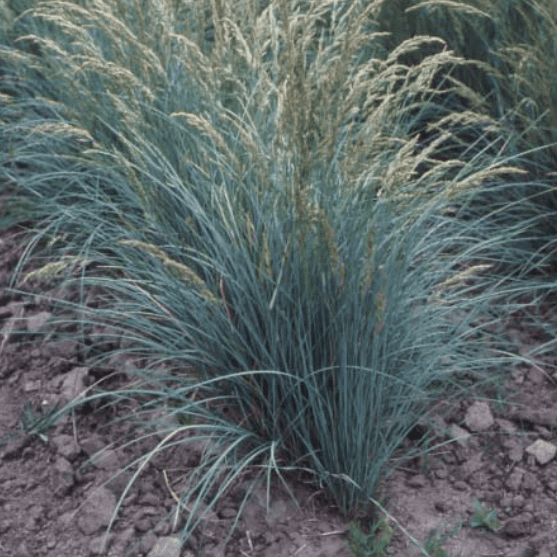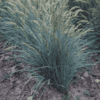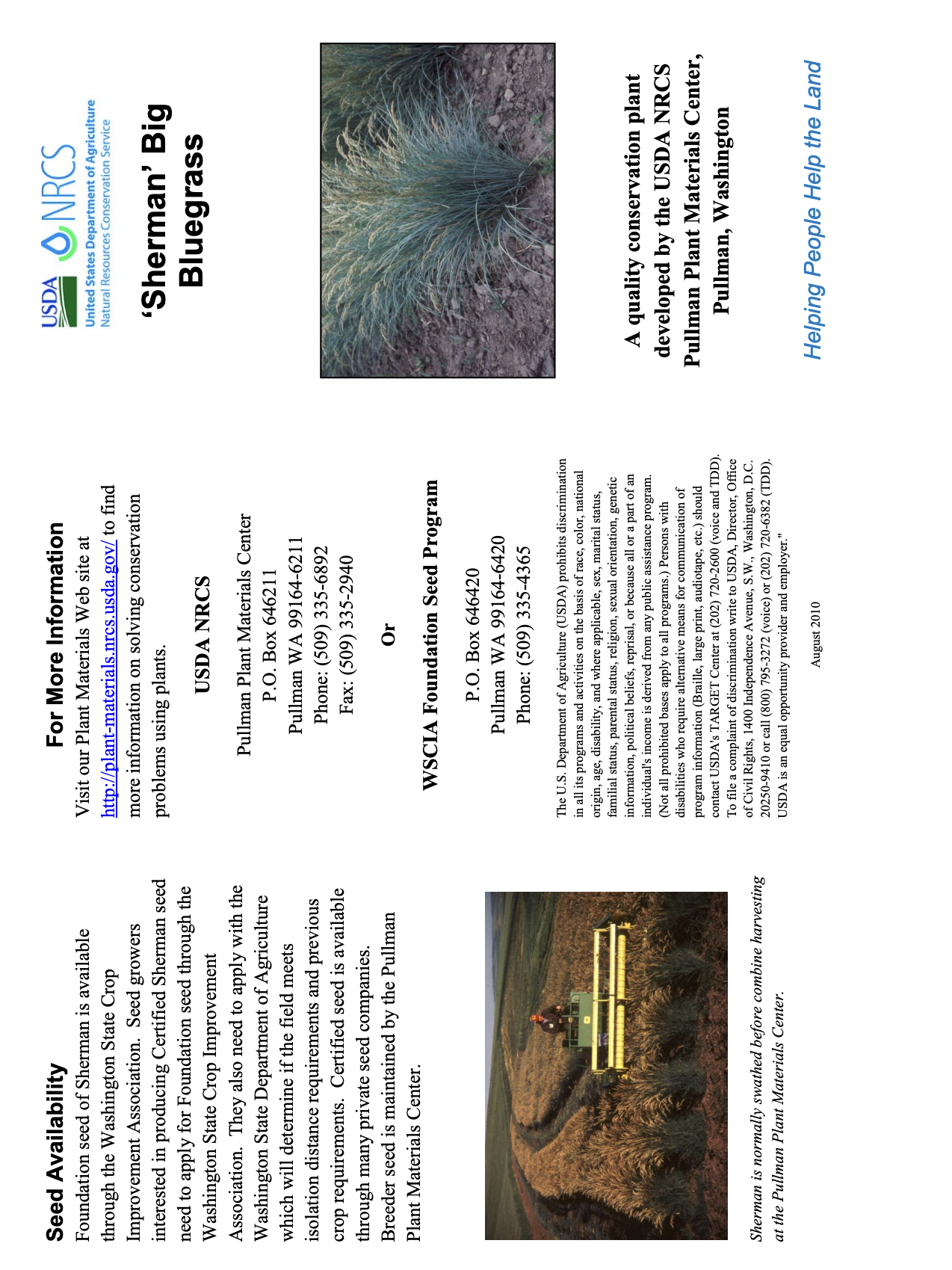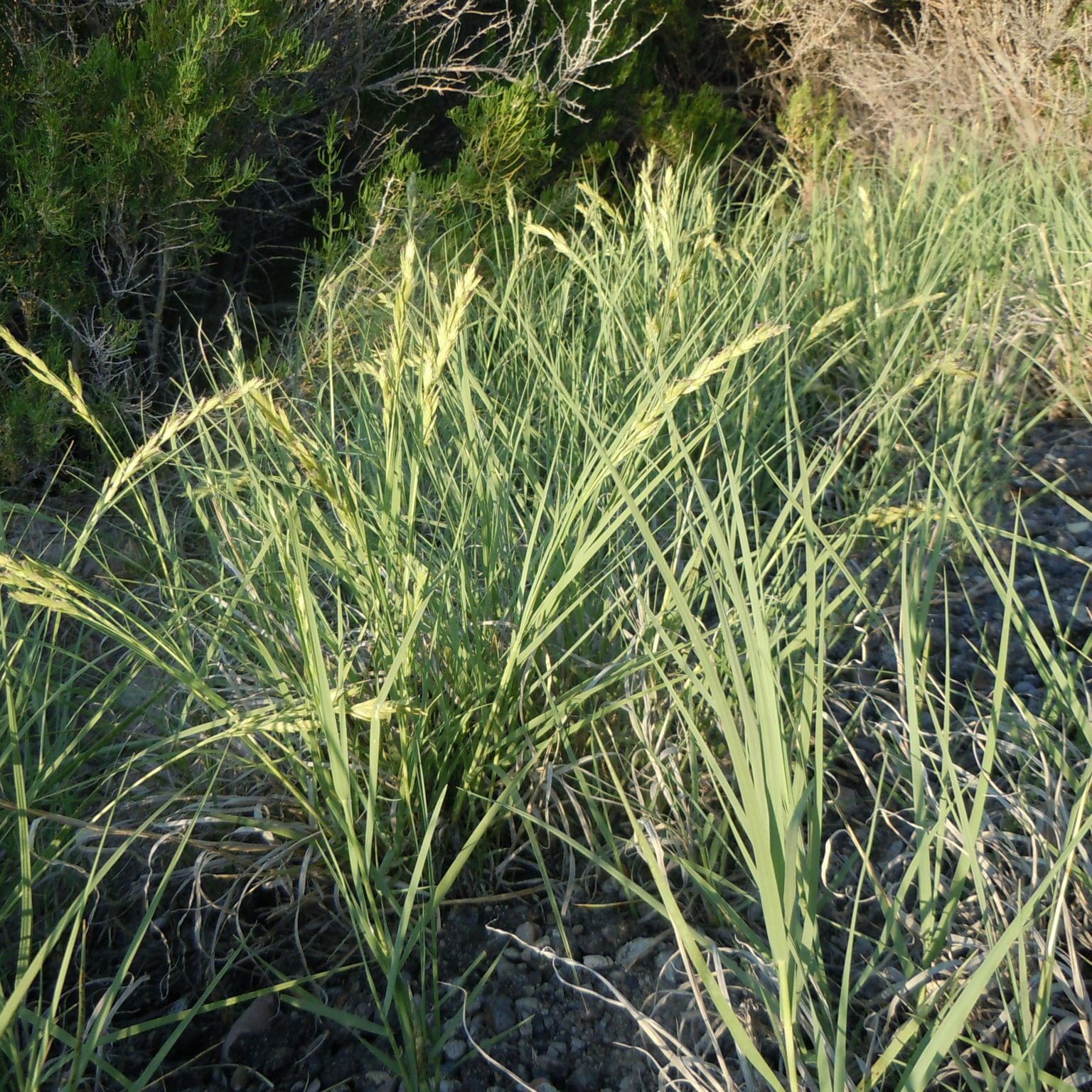Sherman Big Bluegrass Seed and Plant Description
‘Sherman’ Big Bluegrass (Poa secunda, formerly Poa ampla) is a selection of Big Bluegrass that originates from native range sites in Sherman County, Oregon in 1932. Sherman Big Bluegrass is a long-lived, perennial bunchgrass. It has distinct blue, moderately abundant leaves and a large, compact seed head. It is drought tolerant (requires approx 9-12″ precip) and commonly used in range and reclamation seed mixes.
Sherman begins growth early in the spring, as much as 4 weeks earlier than crested wheatgrass. Sherman big bluegrass attains a height of 12- 24 inches stem of 12-24 inches in length. The stems are fine and smooth. The leaves are basal and vary between 8-14 inches long. There are approximately 926,000 seeds per pound. The longevity of the grass is 30+ years. Recruitment from shattered seed is very good. Ease of establishment is moderate.
Sherman Big Bluegrass adaptation:
Big bluegrass naturally occurs on upland sites, open ponderosa pine and lodgepole pine forests. Sherman is best adapted to areas that receive 9-20 inches of annual rainfall. However, it has been successfully used in the lower Columbia Basin where winters are mild and receive as little as 6 inches of annual rainfall. It performs best on well-drained soils. It should not be seeded to alkali flats or densely forested areas. Sherman tolerates moderately acidic soil conditions and is one of the better performing plants for reclaiming hard rock mine spoils. Late summer fires have had little adverse impact on Sherman in CRP burn studies conducted in central Washington.
Sherman Big Bluegrass uses:
- Rangeland seedings
- Critical area stabilization
- Cropland retirement
- Mine soil reclamation
- Upland wildlife habitat
- Dryland hay
Early spring grazing by cattle or sheep is one of the primary uses of big bluegrass seedings. Upland game birds, especially pheasants, prefer big bluegrass fields for nesting.
Sherman Big Bluegrass establishment:
Sherman can be seeded alone but is more commonly seeded with other grasses such as Idaho fescue, bluebunch wheatgrass, Snake River wheatgrass, and basin wildrye. It also can be sown with forbs and legumes. Cheatgrass is the most troublesome weed during establishment of Sherman. Once established, Sherman competes well with cheatgrass. Annual broadleaf weeds such as prickly lettuce and Russian thistle are less of a problem during the establishment of Sherman. Perennial broadleaf weeds such as Canadian thistle and leafy spurge must be controlled because they will severely impact Sherman. Biomass (forage) production of Sherman varies with rainfall and irrigation. Sites that receive 11 inches of annual rainfall will yield 700-1,500 pounds per acre. Irrigated production can be as high as 2 tons per acre.
***Click on the “Quick Plant Facts” tab above for more information.
‘Sherman’ Big Bluegrass NRCS Plant Brochure
‘Sherman’ Big Bluegrass NRCS Plant Brochure
PDF version of NRCS Plant Guide & Fact Sheet
Prepared By: USDA NRCS Pullman Plant Materials Center, Pullman, Washington
Helpful Links
Additional information about this product can be found on the academic websites linked below.
Synonyms
Many plants have more than one common and scientific name. We've listed a few of them below.
- Sherman Big Bluegrass
- Poa secunda sherman
Who is Great Basin Seed?
Great Basin Seed is a seed company that specializes in seed sales and consultation for home, ranch, farm, range and reclamation. We have been a leader in the seed industry since 1974.
Our History
We've been in the seed business since 1974.
What We Offer
We offer seed for home, farm, ranch, range and reclamation projects.
Meet the Gang
We have the best employees in the world! We are proud of the work they do, and trust them to serve you!
Right: Company founder Lloyd and his wife Paula Stevens in a wildflower seed production field circa 1977
Quick Plant Facts
| Common Name: | Sherman Big Bluegrass |
|---|---|
| Scientific Name: | |
| Origin: | |
| Lifespan: | |
| Growth Height: | |
| Elevation of Occurance: | |
| pH Tolerance: | |
| Plant Type: | |
| Min. Precipitation: | |
| Root Form: | |
| Growth Season: | |
| Planting Rate: | |
| Max Sowing Depth: | |
| Best Time to Sow: | |
| Sun & Shade Tolerance: | Full Sun |
| Hardiness Zones: |





